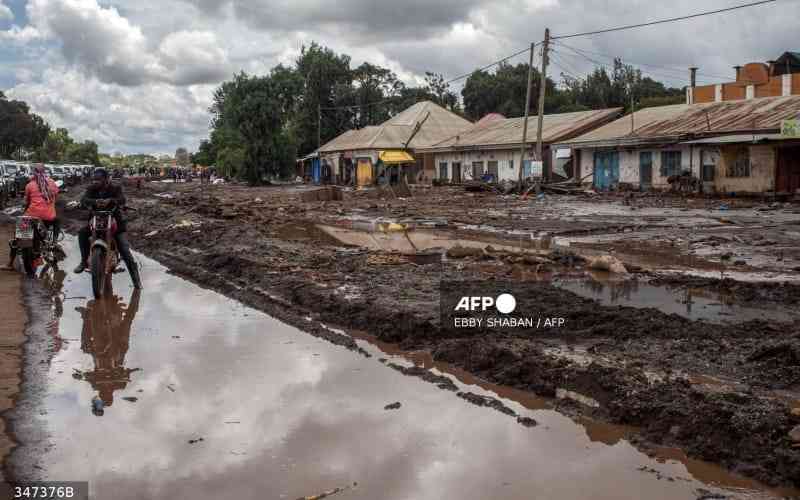Returning to Kenya after some time abroad, I can see there seems to be a lot of excitement about Kenya’s latest fancy acquisition, the SGR. But engage a few friends regarding the excitement and you quickly realize their understanding of the project and how much it stands to impact/not impact their lives and pay back or loss the investment is quite shallow. Like the distinguished Kenyan Economist David Ndii, I have a very dim view of the SGR and this is why:
a) The SGR project is shielded in secrecy
A project of such magnitude as the SGR should be laid bare to the public even before implementation so that it can be critiqued and appreciated....public participation in such a project is actually a constitutional requirement in Kenya. Even basic entitlements like Environmental Impact Assessment are hidden from public view. Zero public education/awareness about a project of that size is inimical to its good. It is therefore no surprise that there are 48 million opinions (as many opinions as Kenyans) about the economic worth and value of SGR. The lack of information has also thrown Truck, Bus and Matatu businesses into a scare, fearing for their enterprises. Yet good public awareness would reassure them that SGR transport will be rolled out and expanded progressively, and has been demonstrated in Europe or India or China, it will take years before SGR can actually attain the efficiency and muscle to run sufficient passenger and freight shuttles between Nairobi and Mombasa daily to begin to pause a real challenge to road public transporters. A visit at relevant sites like the Kenya Railways website reveals no meaningful information beyond flashy pictorials and featured videos of locomotives and the new railway. But what is the cost of SGR? What is the value for money? Where is the Environmental Impact Assessment of the Project? What is the SGR development strategy? How will the service be rolled out over coming years? When will it reach optimum performance and returns on investment?
b) The cost of SGR is prohibitive compared to similar (if not more ultra-modern) developments in Africa. Governor Joho estimates that up to Ksh 100 billion was looted through the scheme. Apart from mere empty denials from State House spokesmen and Ministry officials, no one in Government has actually come up with facts and figures to Rebut Governor Joho's claims convincingly.
c) The SGR is a mis-prioritized development in Kenya today
As reputed Economist David Ndii has opined on numerous occasions, SGR is a case of wrong economic priority ranking in 2017. The economic history of countries like China, Japan, Singapore and even Ethiopia, Rwanda and Ghana here in Africa shows that a country develops through painstaking ascendancy on the step ladder: This means massive investment in policies and programs that affect the majority of citizens over the shortest time possible: Food security, Affordable and Accessible quality health care, Safe water and sanitation, Basic Education, basic housing, Rural road and electricity infrastructure. Dazzling and imposing SGRs and Airports and Five Star Hotels and techno City Parks are a good site to behold, but other than the few super rich up to middle class, how many millions of Kenyans benefit directly from them – in 5 years, in 10 years? In 15 years, even in 25 years? I do not want to sound naïve, but honestly, how can the poor from Siboti in Bungoma or Habbaswein in Garisa or Lokichoggio in Turkana benefit from the SGR in the next 5-20 years– what significant produce will they transport on the SGR? Which crops will they be exporting via SGR? With their livestock herds being decimated by famine progressively over the years, which livestock will they transport or export via the SGR? Where are the large scale investments going on today or in five years’ time that will enable many farmers to produce massive produce to railroad to Mombasa or Malaba?
The Government is borrowing the railway and wagons and tarmac from China without embracing the whole hog of the Chinese development paradigm. China did not get to where it is today from the top. They started from the Bottom. Their Leader, Mao Tsetung, had a basic vision: for a country to prosper, it must first feed its citizens –which for China, is enormous (1.6 billion or over 30 times Kenya). So in the 1940s to 1950s, China invested heavily first in Agriculture and massive Food manufacturing, followed by road and rail infrastructure (China is a massive country – over 12 times the size of Kenya). Sophisticated manufacturing and technology has come later when the bulk of citizens are food self- sufficient. It is obviously bad economics and poor judgement for a lower middle class worker who borrows money and buys a big flashy car when they can’t feed their family for the whole month and year (common sense would dictate that you use a good proportion of the money to invest in farming and buy a small pickup which can move you from point A to point B while also transporting your surplus produce to a local or distant market!). SGR has turned Kenya into a pauper Nation, borrowing to pay debts seamlessly.
d) Corruption and Inefficiency: Until a government comes to power in Kenya which will deal decisively with corruption and embezzlement of public resources by public officials, any public investments that Kenya undertakes will always come to naught in a matter of time. The public service has to be reformed and re-indoctrinated afresh to hold public property and services in awe. The current public service philosophy is warped and rotten. People who are more fortunate than the rest in society shamelessly amass illicit wealth at the expense of children dying from hunger and sickness. You can count hundreds of overrated “modern and “state of the art” public projects that have been built and run down over the past 30 years; Regional Development Authorities (the likes of Lake Basin and TARDA), Kerio Valley, Giant water schemes like Sondu Miro, Nyayo Tea Zones, Rice Irrigation Schemes (Ahero, Mwea, Perkerra), Nyayo Bus, Kenya Meat Commission, KGGCU and KFA, KCC, Mumias Sugar, and sisters Nzioa, Muhoroni and Sony; Pan Paper, Pyrethrum, Coffee and Tea Boards, Kenya National Assurance, Kenya Railways, Kenya Airways, Kenya National Cereals Board, Cotton Lint, Kenya Cashewnuts Factory. Of course the much touted National Youth Service is still raw in our minds. Most of these investments have been looted to extinction. Many exist only on paper or are bad money losing caricatures of their past glory. So, many Kenyans are skeptical about SGR because they feel it will just go the way the others went –looted to extinction by those entrusted to run them. More so because there is no evidence that this Government has put in please serious education and deterrent measures against inefficiency corruption for the benefit of SGR workers and the public who will use it.. Indeed one passenger who rode the SGR recently soon after official launch narrated the small little flags of inefficiency and corruption that are already rearing its ugly heads in SGR operations, barely a week after launch.
e) Chinanization of the economy: Kenyans are increasingly getting alarmed at the rate at which China is taking over our economy. It is true China is spreading its tentacles across Africa in what a friend termed the fourth colonization of Africa (the first was by Europeans, the Second, Neocolonialism by US and Russia, the third by African post-independence elites themselves and the third is now China). But nowhere in Africa where I have travelled (with the exception of a few emerging states like Congo, South Sudan and Somalia/Somaliland) have I seen Chinese taking over entire swaths of professional jobs and businesses from citizens the way it is happening in Kenya. Our Engineers can no longer intern and gain practical experience after University – every little construction job is overseen by a Chinese technician who supervises Kenyan Engineers. This is happening at a time of spiraling unemployment. Kenyan Contractors of the 1980s and 1990s have folded business. The SGR passenger that I spoke about lamented that ticketing and basic coach hosting was being supervised by Chinese – in Chinese language!! This is not the way to endear the public to a public infrastructure like SGR paid for by the Public! The whole China-Kenya economic engagement model needs to be reformed 180 degrees.
f) SGR might never attain a Critical mass of Business to pay off the investment
The small information available in the public domain show that SGR was originally designed to fit in seamlessly with SGRs in Uganda and Rwanda, two of Kenya’s foremost foreign cargo movers. But now Tanzania is reported to have snatched the routing from Kenya, citing inflated land compensation costs along the Kenya SGR compared to Tanzania SGR which is cheaper (from Rusumo on the border of Rwanda to Dar es Salaam is 1300 km, from Malaba border with Uganda to Mombasa is 925 km). Without Uganda and Rwanda/Burundi, which is this huge export produce that Kenya will generate to optimize the SGR and realize returns on the investment? When?
The economic benefits of SGR to the larger Kenyan public especially the 55% living under extreme poverty, remains a mystery, as is the SGR project itself. Lack of credible information and public education/awareness has deepened the mystery, living everything to conjecture and scaremongering. Even those who claim to embrace it have no stark economic or social argument to pause. It is too ambitious to convince a mother of five young ones who go to bed hungry and wake up yawning that SGR is a priority over UNGA!
 The Standard Group Plc is a
multi-media organization with investments in media platforms spanning newspaper
print operations, television, radio broadcasting, digital and online services. The
Standard Group is recognized as a leading multi-media house in Kenya with a key
influence in matters of national and international interest.
The Standard Group Plc is a
multi-media organization with investments in media platforms spanning newspaper
print operations, television, radio broadcasting, digital and online services. The
Standard Group is recognized as a leading multi-media house in Kenya with a key
influence in matters of national and international interest.
 The Standard Group Plc is a
multi-media organization with investments in media platforms spanning newspaper
print operations, television, radio broadcasting, digital and online services. The
Standard Group is recognized as a leading multi-media house in Kenya with a key
influence in matters of national and international interest.
The Standard Group Plc is a
multi-media organization with investments in media platforms spanning newspaper
print operations, television, radio broadcasting, digital and online services. The
Standard Group is recognized as a leading multi-media house in Kenya with a key
influence in matters of national and international interest.








